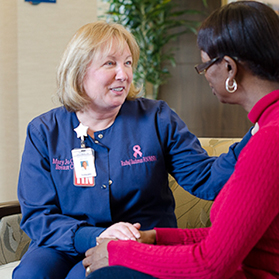Breast Cancer Genetic Testing: How Accurate Are Results?

You’ve just had genetic testing to determine the likeliness of inheriting a gene mutation linked to breast cancer. Now, you’re anxiously awaiting the results, which usually take two to three weeks to return.
Courtney Rice, MS, Licensed Genetic Counselor at TriHealth, explains what the results mean and what happens next.
Interpreting Genetic Testing Results
“With genetic testing, there is really no false-positive. It’s actually a higher risk for a false-negative,” Courtney explains. “The reason for that is because we are still learning a lot about the genetic causes of all cancers, including breast.”
If an individual has a genetic test, your counselor is looking for mutations of the genes BRCA1 or BRCA2, which are responsible for most cases of hereditary breast cancers (as well as ovarian cancer); however, they are not the only genes that could can cause an increased risk for breast cancer.
Genetic Testing: What’s the Biggest Concern?
In cases where a woman without breast cancer chooses to have genetic testing, and her results come back positive, we then know her risk is increased. However, if a woman who has a family history of cancer tests negative, she could still have a breast cancer risk that is higher than the average, due to other genetic mutations, unknown genetic risk factors, and/or non-genetic risk factors.
“It just means we haven’t identified [that gene] yet, or maybe it’s not related to the BRCA genes, but another gene, so that’s what I mean by false-negative,” Courtney explains.
Because of the nuances involved with genetic testing and the complicated interpretation of results, it’s important to remember that a normal test result does not necessarily mean an individual will not develop breast cancer down the road. “This is where genetic counselors are useful, because the genetic test is a blood test, so it’s fairly simple to get that sample and send it in, but it’s more about how to interpret that with background of your family history,” Courtney says.